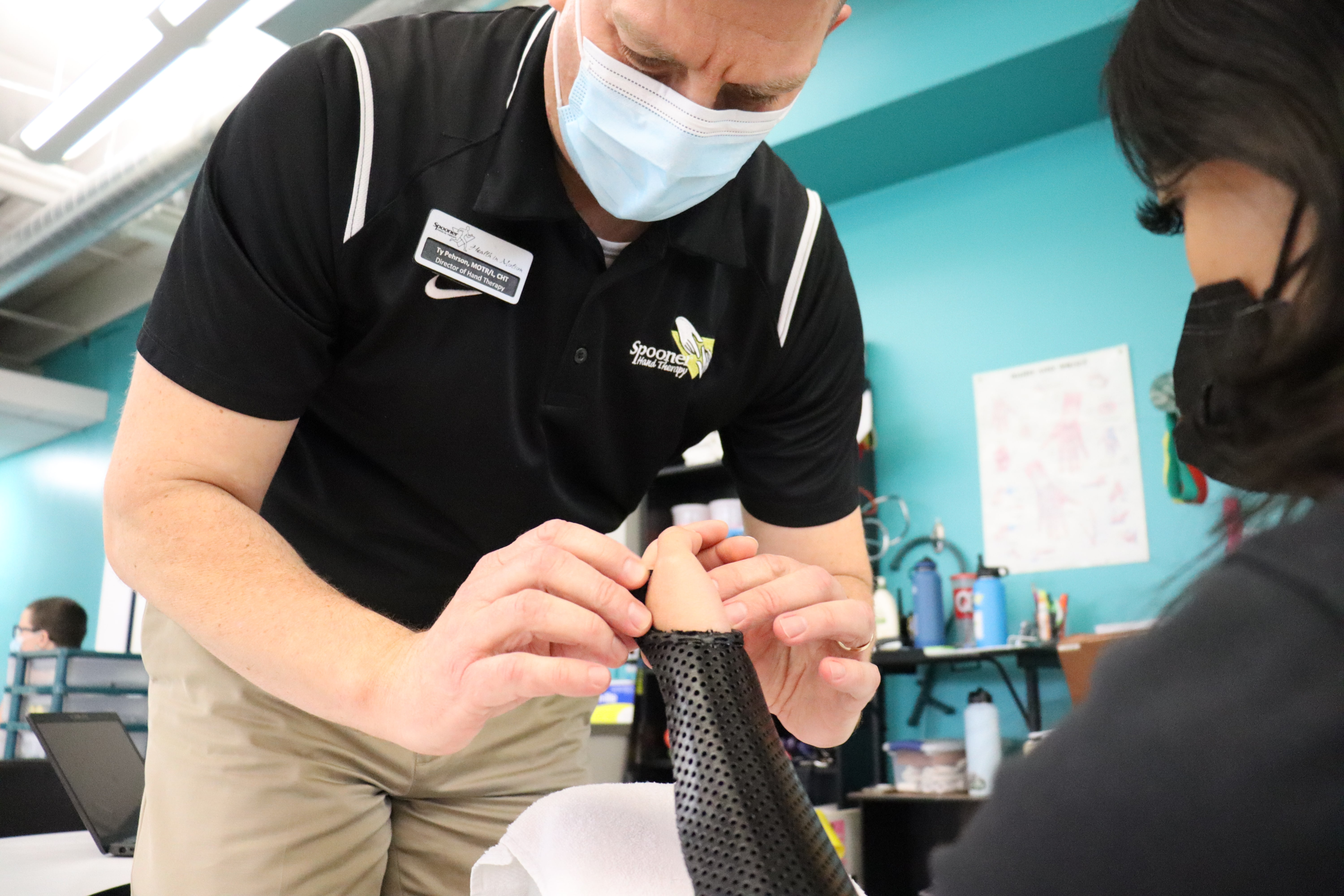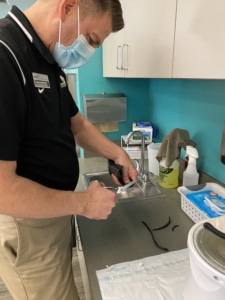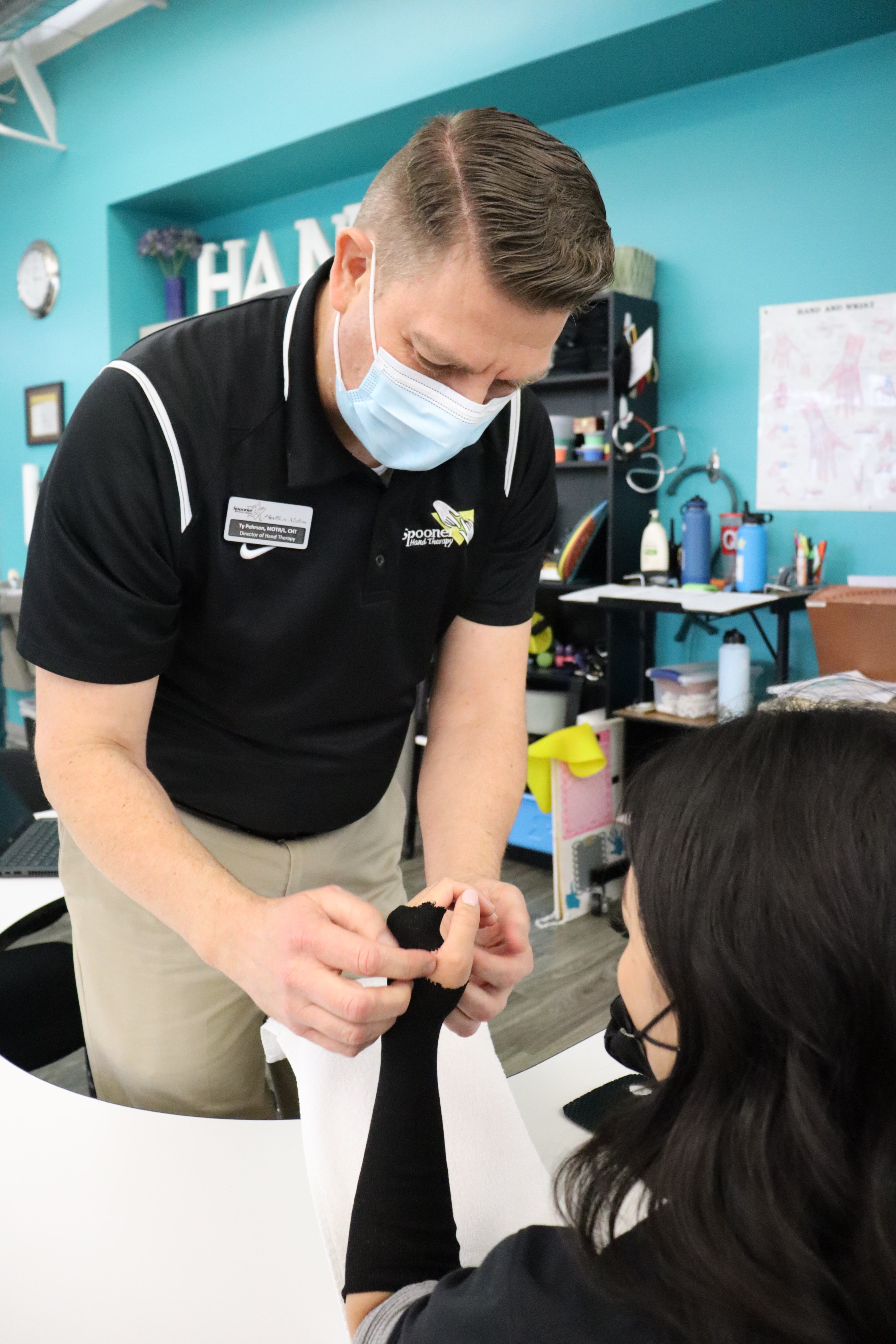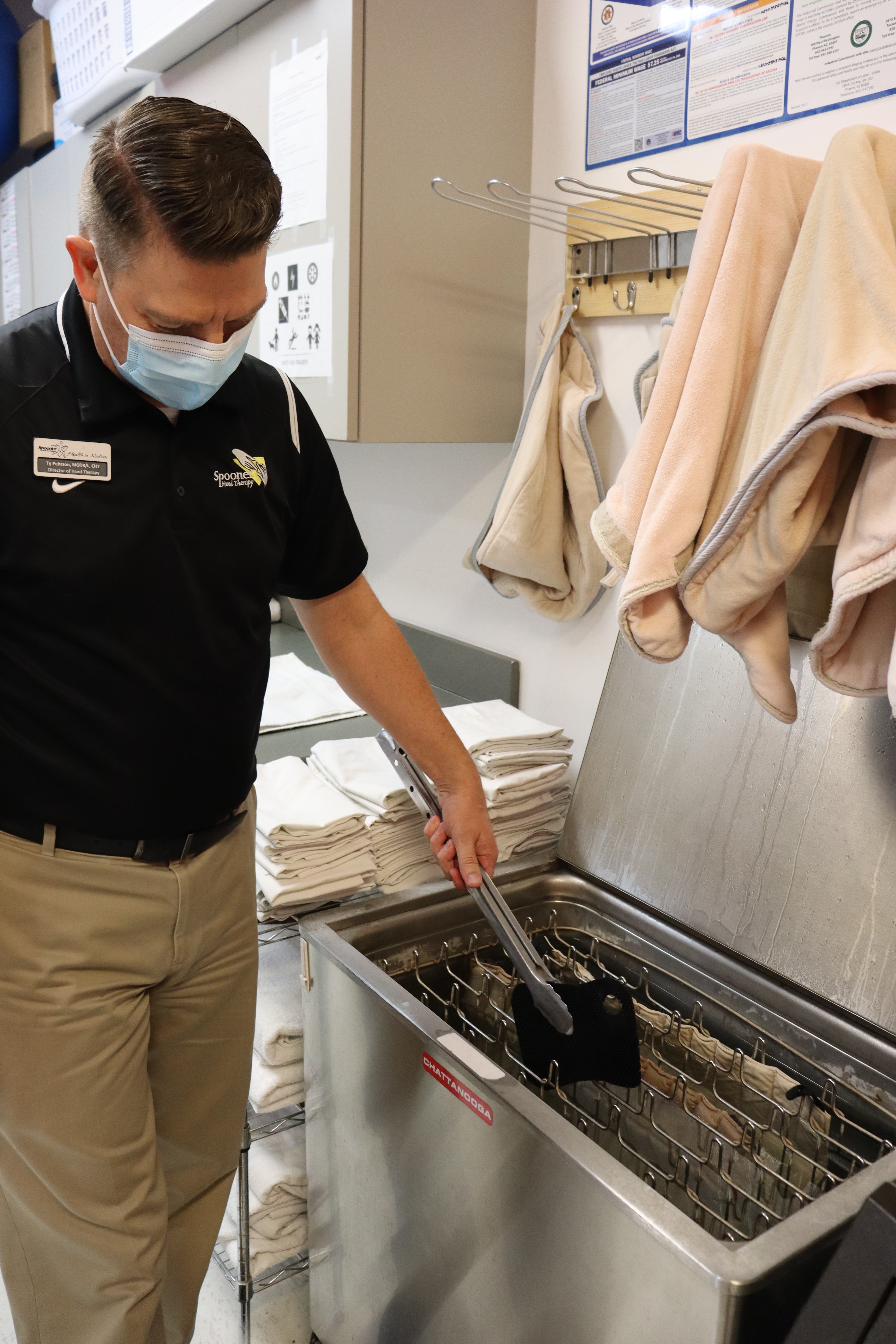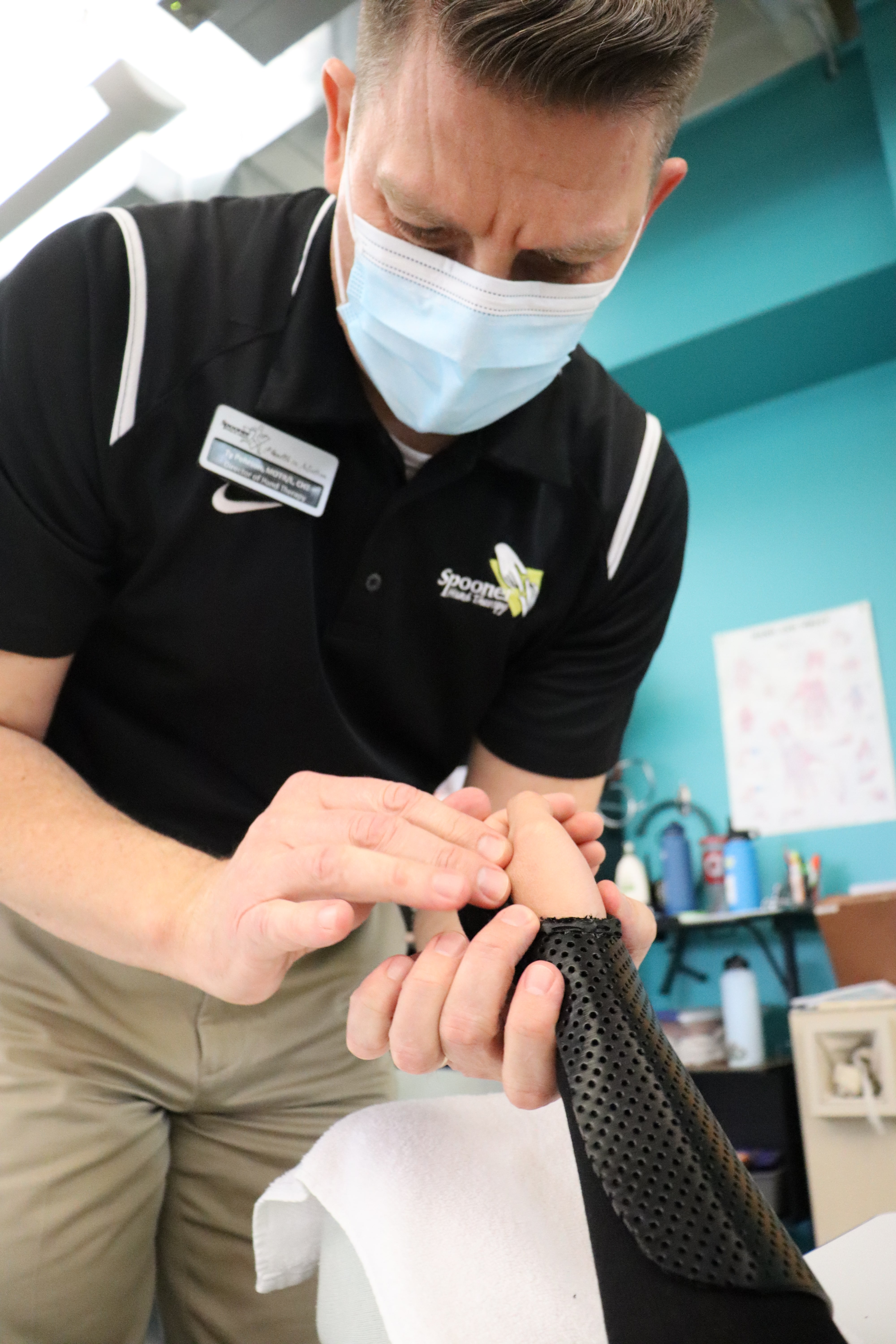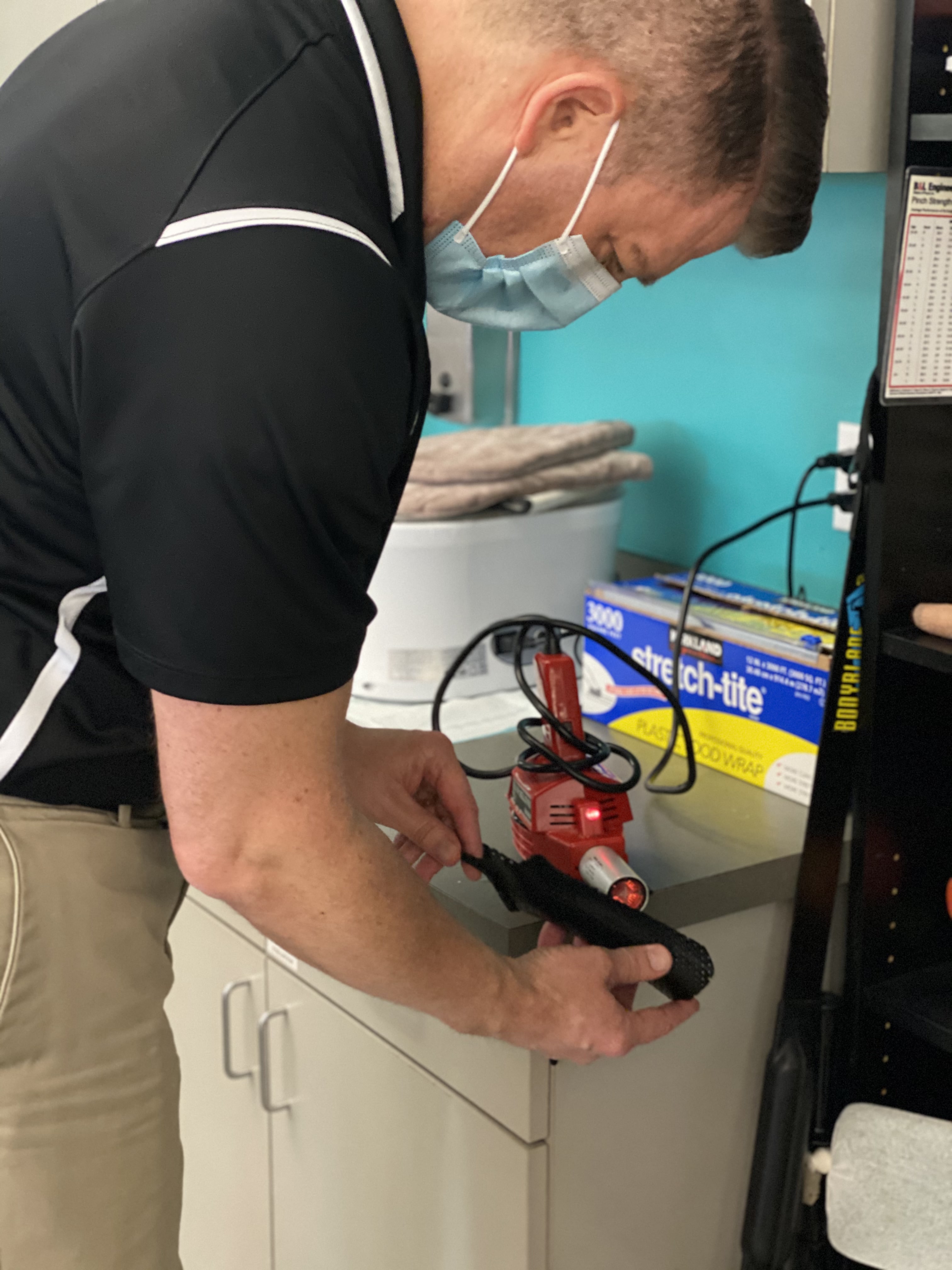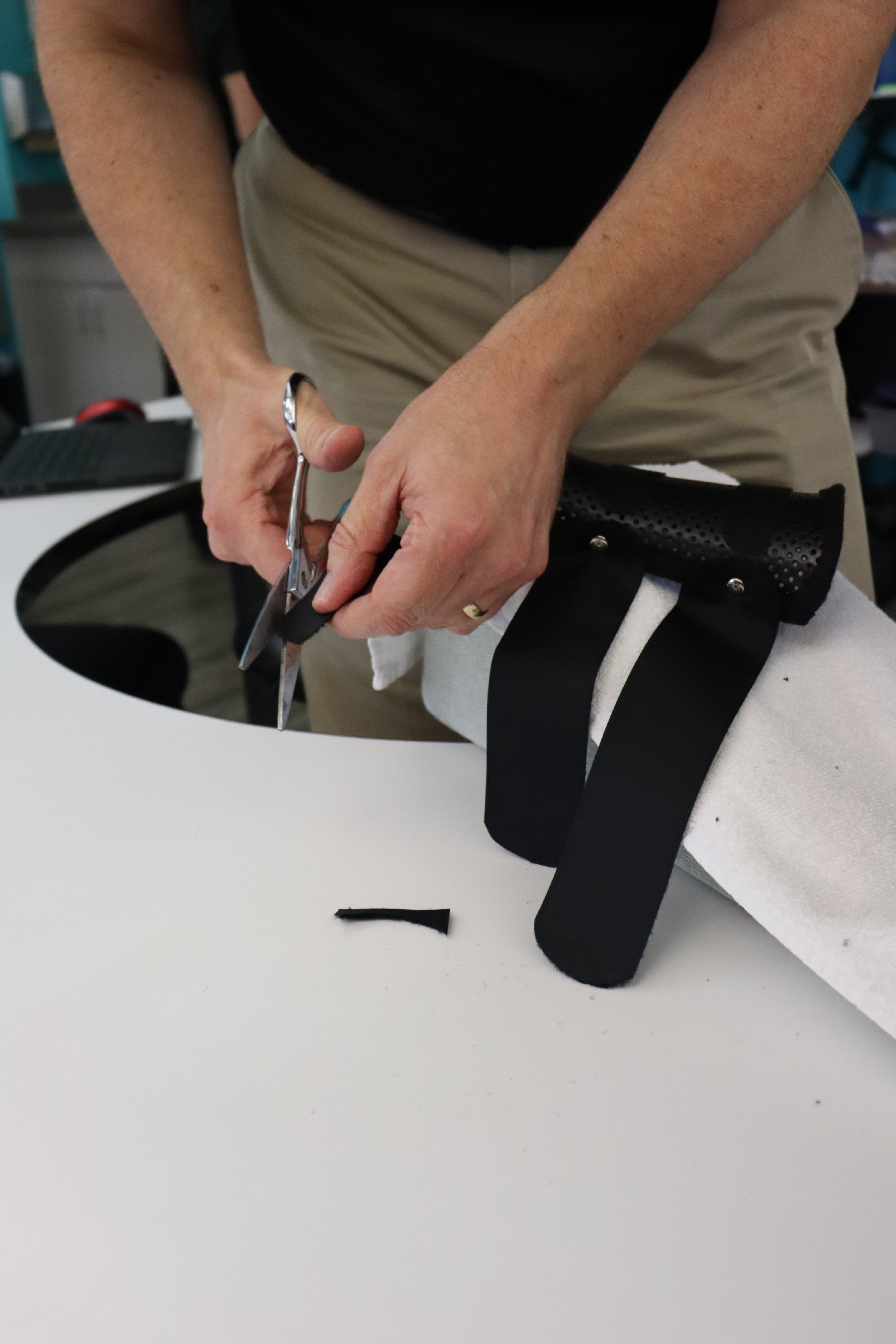In celebration of Hand Therapy Month, we asked Spooner’s Director of Hand Therapy, Ty Pehrson, MOTR/L, CHT, to walk you through everything you need to know about the world of custom splinting and what to expect when visiting a Spooner hand therapist.
You most likely have seen splints in a variety of local drug stores. When seeking relief from pain or injury many of us will turn to a readily available solution, like a generic store-bought splint. However, these generic splints cannot be customized to fit your body, might not even be an appropriate solution for addressing your pain, and often times leave users in more pain or discomfort. What you see is what you get with those splints. Luckily, the Spooner occupational therapists and hand therapists can create custom splints, designed for your body and to address your specific needs, right in their clinic!
As a creative person, Ty at Spooner Glendale, said he took very quickly to custom splinting when in graduate school. Ty said, “I love the challenge of being given a diagnosis or an injury and then having to custom fit a splint to be functional, protective, and aesthetically pleasing. To me, splinting is the artistry of hand therapy.”
What are the benefits of a custom splint?
There are a variety of benefits to wearing a custom splint! The number one benefit is that it is custom formed to fit specifically to your hand and wrist. It’s a perfect fit for you and no one else and will minimize rubbing or sore spots that are common with store-bought splints. The splint can also be customized to fit your needs – so if you need a little more padding or another strap added, it’s easy to do! A custom splint is also a lot lighter than any off the shelf splint.
Most insurance will cover the cost of custom splints, however we suggest you verify benefits with your health insurance provider.
What does the creation of a custom splint typically look like?
Ty said that he creates custom splints weekly for his patients, sometimes even every day! The first step is to cut the proper pattern out of thermoplastic and measure it to the patient’s hand and wrist. The thermoplastic material is then heated in hot water to make it more pliable to aid in molding to the patient.
A protective cotton sleeve is placed on the patient’s hand and wrist and then followed by the heated thermoplastic. Ty says patients will often comment how the warmth from the mold actually feels nice and soothing to their injury.
The mold is then removed from the patient and trimmed to fit once the mold cools down and hardens. The final step is to add whatever straps and padding may be needed. Most splints will use velcro closures for easy application, removal and to ensure a snug and comfortable fit. You now have a custom splint created specifically for you by your hand therapist!
Why would I need a custom splint?
Candidates for a custom splint are typically patients who have just had surgery. Everyone has unique situations, especially post-surgery, and a custom splint allows hand therapists to create a splint that will fit the exact needs of that patient. Other common scenarios are when a patient is experiencing carpal tunnel syndrome. Wearing a custom splint at night allows the patient to keep the wrist in a neutral position while sleeping.
Patients who are suffering from radial nerve palsy are also great candidates for wearing a custom splint. Radial nerve palsy is a result of compression of the radial nerve, which is often caused by a fracture of the humerus bone. A dynamic custom-made splint can help combat possible pain, weakness, or loss of function in the wrist, hand, or fingers.
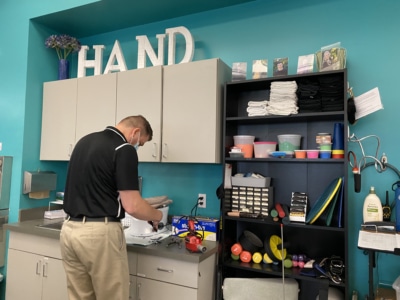
Ty explains, “Since patients with radial nerve palsy are unable to extend their hand, the splint essentially opens up their hand again. The splint holds their wrist up for them and assists in keeping everything stable. When trying to grab an item, the splint opens their fingers with rubber bands and holds the fingers open so they can use their hand effectively.” Splints for radial nerve palsy are typically the hardest ones to make because of the complexity in design and the level of detail it entails.
It is key to note that you do not have to be injured to get a custom splint! A lot of people have hypermobile joints, which can impact typing, writing, cooking or other daily tasks. A good example is a massage therapist who has hypermobile thumbs that are often hyperextending when massaging. If they have loose joints, all of that hyperextension makes them more prone to injury because their joints are being stretched out repeatedly while massaging. A custom splint will keep that thumb in a mobile position and won’t allow the joint to hyperextend when putting pressure on the thumb.
Ty said, “I like the challenge of creating custom splints and coming up with the blueprint. Every splint is unique – from writing splints where patients don’t have the strength to hold the pencil up to weight-lifting splints that allow patients to lift weights again. I truly enjoy helping people achieve their highest functional level and getting them back to doing what they want to in life.”
Learn more about Hand Therapy at Spooner Physical Therapy. Ready to schedule an appointment? Schedule an appointment or complimentary movement screen with a Spooner physical therapist at one of our locations throughout the valley.

